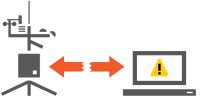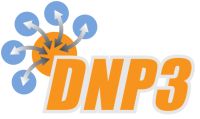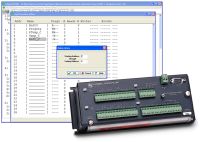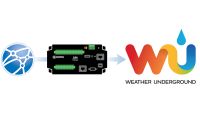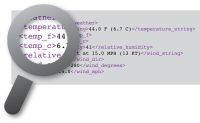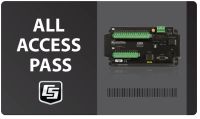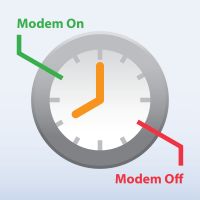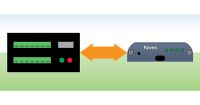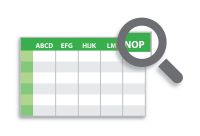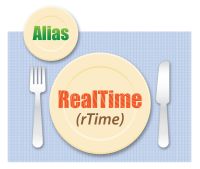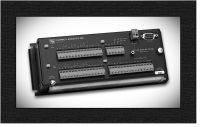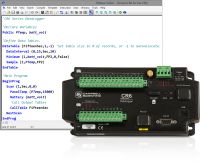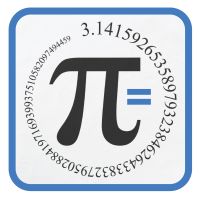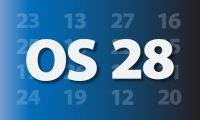Programming Topics Your source for programming-related articles
Displaying 21 - 40 of 43 articles
How to Prevent a Program Update from Causing a Loss of Communication
Author: Robert Hyatt | Last Updated: 11/10/2016 | Comments: 5
Imagine that you have a data logger station three hours away that gathers your measurement data. To physically get to your station, not only do you have to drive for three hours, but then you have to hike for an hour up a snow-covered mountain. A... read moreHow to Access Your Measurement Data Using DNP3
Author: Paul Smart | Last Updated: 09/02/2016 | Comments: 1
Turning your Campbell Scientific data logger into a DNP3 outstation is a great way to allow systems that use the DNP3 protocol to have access to your live measurement data, as well as historical data. When you use your data logger as a DNP3 outstation, the... read moreThe Best Way to Edit Input Locations in Edlog Programs
Author: Janet Albers | Last Updated: 06/08/2016 | Comments: 0
If you have one of our retired data loggers that uses the Edlog programming language, do you know the best way to change an Input Location name? It’s possible that you may want to use a different name or insert a name where one is... read moreHow to Select the Correct Pulse Type for Your Measurements
Author: Jacob Davis | Last Updated: 04/21/2016 | Comments: 0
Have you ever had a sensor work on a P (pulse) data logger terminal, but not on a C (control) terminal? Is the list of choices for the PConfig parameter in the PulseCount() instruction daunting? Campbell Scientific data loggers offer several options for measuring pulse... read moreHow to Access Live Measurement Data Using Modbus
Author: Paul Smart | Last Updated: 04/07/2016 | Comments: 24
Did you know that you can turn your Campbell Scientific data logger into a Modbus TCP/IP server? Do you know why that’s a good idea? Campbell Scientific data loggers are commonly used as Modbus server devices. This means that the data logger is configured to... read more5 Steps to Post Your CR6 Data to Weather Underground
Author: Sam Utley | Last Updated: 03/23/2016 | Comments: 10
Note: It appears that after this blog article was written, Weather Underground has been phasing out the “PWS – Upload Protocol.” The following tutorial may or may not work currently or in the future. However, it continues to offer some insight into structuring a CRBasic... read more6 Steps to Easily Parse Data from a Trusted Source
Author: Gary Roberts | Last Updated: 03/02/2016 | Comments: 1
Would it be helpful to include data from a reputable source with your own data? If you have permission to use another source’s data for free or by agreement, how can you easily extract the specific data you want to use without doing a lot... read moreGetting to Know DNP3
Author: Paul Smart | Last Updated: 01/20/2016 | Comments: 0
Have you heard of DNP3 but been unsure of what it is or what it’s used for? In this brief article, I’ll introduce you to this communications protocol, its role in SCADA applications, and how you can use it with your Campbell Scientific equipment and... read moreHow to Programmatically Access Stored Data Values
Author: Janet Albers | Last Updated: 01/13/2016 | Comments: 16
After you store measurements and other data in your data logger’s tables, how do you access that data to perform operations in your CRBasic program? Where can you get an all-access pass to your data? This article will explain how you can use a special... read moreHow to Convert Wind Directions in Degrees to Compass Directions
Author: Jacob Davis | Last Updated: 01/06/2016 | Comments: 2
Do you feel lost when sifting through wind direction data that is listed in degrees? For example, can you picture in your mind what direction 195 degrees is? Would it be easier if your data logger could put your data in compass directions instead? In... read moreUse Time Intervals for More than Storing Data: Decisions and Control
Author: Janet Albers | Last Updated: 12/30/2015 | Comments: 2
We all know that Campbell Scientific data loggers are really good at taking measurements and storing data. But did you know that they can also make decisions and control other devices? Often, device control is done based on a time interval. This article briefly illustrates... read moreHow to Access and Control Your Raven Modem via TCP/IP
Author: Gary Roberts | Last Updated: 12/09/2015 | Comments: 1
Have you ever wanted the ability to control your Raven cellular modem with your data logger? Would it be nice to be able to get data on the health of your cellular modem and its data network? Maybe you even want to reset your Raven... read moreHow to Rename Field Names for Easier Data Identification
Author: Janet Albers | Last Updated: 11/11/2015 | Comments: 0
When you view your measurement data in tabular format, such as in View Pro or similar software, are your column headings, or field names, helpful to you? At a glance, do your field names quickly identify the data in the columns? If not, you may... read moreServing up the RealTime() Instruction with a Side of Alias Declarations
Author: Janet Albers | Last Updated: 10/07/2015 | Comments: 2
CRBasic has a full menu of instructions to help you write or edit your data logger program. This article offers a main course of scheduling your data logger actions using the RealTime() instruction with a side dish of making your program easier to read with... read moreMaking Sense of an Edlog Program File for Your Retired Data Logger
Author: Janet Albers | Last Updated: 09/09/2015 | Comments: 0
Our retired data loggers are still in use, and some of them use the Edlog programming language. Do you have an Edlog data logger with a .dld compiled program file that you don’t know how to read? Does your .dld file have codes that you... read more5 Things to Know before Discussing Your Data Logger Programming Issue
Author: Janet Albers | Last Updated: 08/26/2015 | Comments: 0
If you need help programming a Campbell Scientific data logger, here are some things you can do to have a more productive conversation with a Customer Support and Implementation Engineer. At a minimum you’ll want to know: What data logger you’re working with—such as a CR6, CR1000,... read moreCRBasic Tips to Simplify Data Post-Processing
Author: Barbra Utley | Last Updated: 08/12/2015 | Comments: 3
You’ve collected your measurement data, but how do you easily make sense out of it? How can you simplify the post-processing of your data and start analyzing it sooner? In this article, I’ll explain how adding some code to your CRBasic program can save you... read moreThe Benefits of Using Constants in CRBasic
Author: Janet Albers | Last Updated: 08/05/2015 | Comments: 0
Why should you use a Constant declaration in your CRBasic program? What is a Constant anyway? In a previous article ("Going Public with Your Variables in CRBasic"), we talked about the Public and Dim variable declarations. Variables are just that—variable; they change. Constants, on the other hand, don’t change;... read more4 New Ways to Use Array Notation: Copying or Transposing
Author: Janet Albers | Last Updated: 07/21/2015 | Comments: 0
Copying or transposing has become easier with OS 28 (CR6 OS 1). This new operating system enables you to copy portions of an array to a new location, such as when transposing rows and columns. In this example we start with A(3,2) (3 rows, 2 columns) initialized as... read more4 New Ways to Use Array Notation: Complex Scaling
Author: Janet Albers | Last Updated: 07/01/2015 | Comments: 0
You can perform more complex scaling in an array without needing a For/Next loop. To take advantage of this feature, use OS 28 (CR6 OS 01) or later. In this example program, a unique set of multipliers and offsets is applied to the column of an... read more











